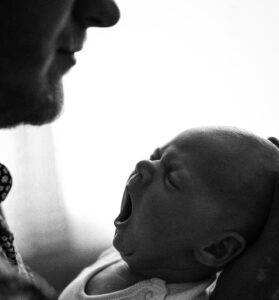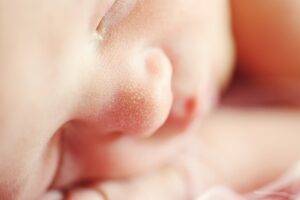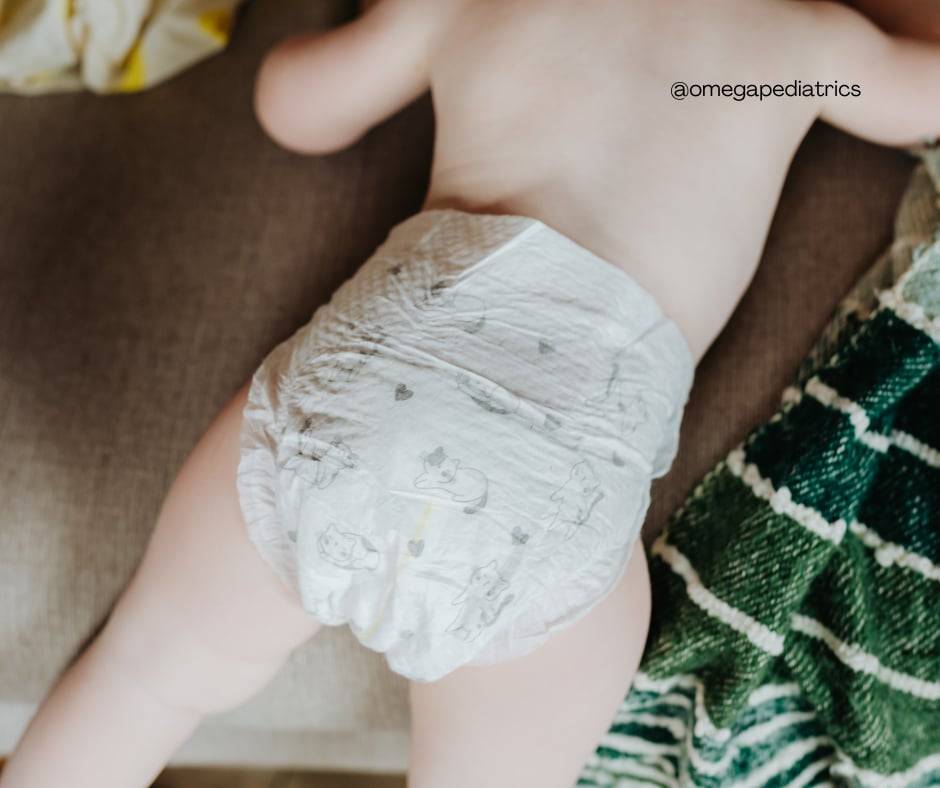Bringing home a newborn baby is a life-changing event that comes with a mix of joy, excitement, and nerves. Caring for your newborn baby 0 to 3 months old is all about adjusting to a new rhythm, not just for your baby but for you.
A newborn baby 0 to 3 months old needs constant care and attention; understanding their cues and needs makes these first three months smoother for everyone. From feeding and sleep to diaper changes and comfort techniques, this guide will walk you through essential tips to care for your newborn baby during their first three months.
Understanding Your Newborn Baby 0 to 3 Months Basic Needs
Newborns depend on their parents for everything, as they’re still getting used to life outside the womb. Unlike adults, who can express themselves with words, newborns communicate their needs through subtle and sometimes not-so-subtle signals. Learning to decode these signals will ensure your baby’s comfort and well-being.
Recognizing and Responding to Baby Cues
Particularly for newborn baby 0 to 3 months old, they communicate through cues, from their cries to their body movement. Understanding these cues is essential to knowing what your baby needs, whether food, sleep, or comfort. But remember, a newborn cannot respond to their parent with conscious purpose.
- Crying: This is your baby’s most obvious signal, and while it’s stressful, it’s their main way of telling you something. They could be hungry, wet, or just looking for a cuddle. Different types of crying have different meanings; you’ll learn the differences over time.
- Rooting: When your baby turns their head and opens their mouth, it tells you they’re ready to eat. This reflex is particularly noticeable in the first few weeks and is one of the earliest hunger cues.
- Fists and Squirming: Babies who are tired or uncomfortable may clench their fists or squirm. This signals they’re overtired and need help settling down for a nap.
How Often Should a Newborn Baby 0 to 3 Months Old Be Fed?
Feeding is vital in caring for a newborn baby 0 to 3 months old. In these first few months, they need to eat often. They have tiny stomachs and can only take in small amounts of milk at a time. Hence, newborns need to be fed frequently. Also, babies often go through growth sp
- Breastfeeding: Breastfed babies typically eat every 2-3 hours, and each feeding session may last 10–45 minutes. Nursing on demand ensures your baby gets enough to eat and establishes a good milk supply for the mother.
- Formula feeding: Formula-fed babies generally eat every 3-4 hours. For newborn baby 0 to 3 months old, you will give them about 2-3 ounces per feeding, increasing as they grow and their appetite increases. Follow your baby’s hunger cues rather than trying to stick to a strict schedule. Also, babies undergo growth spurts which cause them to eat more frequently than usual. These spurts typically happen around 2 to 3 weeks, 6 weeks, and again at about 3 months.
The Importance of Burping After Feeding for Newborn Baby 0 to 3 Months
Especially for newborn baby 0 to 3 months old, they swallow much air during feeding. You would readily notice your baby’s discomfort, hence, burping makes an essential routine after feeding. Burp them to release air they have swallowed during nursing or bottle-feeding. This reduces fussiness and gas, which causes their discomfort.
To burp your baby, hold them upright against your chest with their head on your shoulder, and gently pat or rub their back. Don’t worry if your baby doesn’t always burp—some babies swallow less air and may not need to burp after every feeding. However, if your baby seems uncomfortable after feeding, it’s a good idea to try again.
Creating a Safe Sleep Environment for Your Newborn
Safe sleep is one of the most important aspects of caring for your newborn baby 0 to 3 months old. Infants in the first eight weeks have no control over their movements, their physical activity is involuntary or reflex. During sleep, they can’t roll over to either side, they completely rely on you to change their sleeping position. Following the correct guidelines for sleep reduces the risk of sudden infant death syndrome (SIDS), and ensures your baby is comfortable and well-rested.
Placing Your Baby to Sleep Safely
The safest way to put your newborn baby 0 to 3 months old to sleep is always on their back. Babies who sleep on their stomachs or sides are at a higher risk for SIDS. Additionally, here are some other important safe sleep practices:
- Use a firm mattress: Place your baby on a firm, flat surface, such as a crib or bassinet, that meets current safety standards.
- Avoid soft bedding: Items like pillows, quilts, and stuffed animals should not be in the crib, as they pose a suffocation hazard. Keep the crib free of these items for at least their first year.
- Room-sharing is safer than bed-sharing: It’s recommended that your baby sleep in the same room as you, but not in the same bed. Having the crib or bassinet near your bed makes it easier to monitor your baby while reducing the risks associated with bed-sharing.
For more information on creating a safe sleep environment for your newborn baby 0 to 3 months, consider reading this helpful guide from Omega Pediatrics: How Bassinets Help Reduce SIDS Risk: The Science Behind Safe Sleep for Babies
Understanding Newborn Baby 0 to 3 Months Sleep Patterns
Newborns sleep a lot—anywhere from 14 to 17 hours a day. However, they don’t sleep for long stretches but wake every 2 to 4 hours for feeding, a diaper change, or comfort. This can be exhausting for parents, but it’s a part of your baby’s development. In the first few weeks, your baby’s sleep will seem unpredictable.
However, you can create a sleep routine by differentiating between day and night. During the day, keep the environment light and active, and engage with your baby during feedings. During nighttime, keep the lights dim and minimize interaction to signal that it’s time for sleep.
Diaper Changes: Keeping Your Baby Clean and Comfortable
Changing diapers is one of the most frequent tasks in newborn care, and it’s a great time to bond with your baby. On average, newborns need a diaper change 8 to 12 times; this slightly varies depending on feeding patterns.
What to Expect During Diaper Changes
In the first few days, your newborn will pass meconium—a thick, tar-like substance of their first bowel movements. After that, you’ll notice changes in their stool color and consistency depending on whether you’re breastfeeding or formula-feeding. Always wipe clean your baby’s diaper area thoroughly, from front to back, to prevent infections and keep their skin healthy.
- Breastfed babies usually have looser, yellowish stools that occur frequently, even after every feeding.
- Formula-fed babies tend to have firmer, tan, or brownish stools that are less frequent than breastfed babies.
Preventing Diaper Rash
Diaper rash is a common concern, especially in the first few months when a baby’s skin is sensitive. Here’s how to prevent it:
- Frequent diaper changes: Leaving a wet or dirty diaper on too long irritates the skin and leads to a rash. Change your baby’s diaper as soon as you notice it’s soiled.
- Gentle cleaning: Use unscented baby wipes or a soft cloth with warm water to clean your baby’s skin. Be gentle to avoid irritation.
- Diaper creams and ointments: Apply diaper cream that contains zinc oxide or petroleum jelly to create a barrier between your baby’s skin and moisture. This is particularly helpful if your baby is prone to rashes.
If your baby develops a diaper rash, allow their skin to air out as much as possible, and apply a thick layer of cream to soothe the irritated area. If the rash doesn’t improve or worsen, consult your pediatrician.
Health Concerns for Your Newborn
You’ll likely have many questions about your baby’s health in the first few months. While some issues are normal, such as minor skin rashes or nasal congestion, there are a few signs that you should never ignore.
When to Contact a Pediatrician
Being a new parent means constantly worrying about your baby’s well-being, but there are certain situations when you should contact your doctor. Here are some signs to look out for:
- Fever: If your newborn has a rectal temperature of 100.4°F (38°C) or higher, contact your doctor immediately. Babies under 3 months with a fever need to be evaluated right away.
- Trouble breathing: Wheezing, grunting, or rapid breathing are signs that your baby has trouble breathing. If you notice any of these symptoms, seek medical attention right away.
- Lethargy: While newborns sleep much, they should still be alert and responsive during waking hours. If your baby seems unusually tired, hard to wake, or uninterested in eating, it’s time to call the doctor.
Comforting a Fussy Baby
Crying is your baby’s main communication, but it’s frustrating when nothing seems to soothe them. There are several ways to calm your fussy baby, whether hungry, tired, or needing attention.
The 5 S’s for Calming a Fussy Baby
Created by pediatrician Dr. Harvey Karp, the “5 S’s ” technique is popular for soothing fussy babies, particularly your newborn baby 0 to 3 months old. This proved beneficial for newborns since it mimics the conditions your baby was used to in the womb. Try different combinations of these techniques to see what works best for your baby. Over time, you’ll know better how to calm them down.
- Swaddle: Wrapping your baby in a snug blanket helps recreate the cozy environment they experienced in the womb.
- Side/Stomach Position: Hold your baby on their side or stomach (always place them on their back to sleep), which soothes them.
- Shushing: White noise, such as a fan or a white noise machine, calms your baby by mimicking the sounds in the womb.
- Swinging: Gentle rocking or swinging motions relax your baby.
- Sucking: Many babies find comfort in sucking on a pacifier or breastfeeding.
Learning these behaviors early, particularly for newborn baby 0 to 3 months, reduces their fussiness and enables you to meet their needs. You can learn more about your baby’s fussiness in this article: My Newborn Baby is Fussy: 10 Expert Tips for Calming Your Baby
Caring for Yourself as a New Parent
The first few months of parenthood can be exhausting, and it’s easy to forget about your own needs when you’re focused on your newborn. But self-care is essential for your well-being and your ability to care for your baby. By taking care of yourself, you’ll be better equipped to handle the demands of parenthood.
Tips for Staying Healthy and Energized
- Sleep when your baby sleeps: It’s a cliché, but true. Even short naps can help you feel more rested.
- Ask for help: Don’t hesitate to lean on friends, family, or your partner for support. Whether cooking a meal, doing laundry, or holding the baby so you can rest, asking for help is crucial.
- Eat well and stay hydrated: Proper nutrition and hydration are important if breastfeeding. Keep healthy snacks on hand and drink water throughout the day.
Embrace the Early Days of Caring for Your Newborn
The first three months with your newborn feel like a whirlwind, filled with sleepless nights and countless diaper changes. But it’s also a time of deep bonding, discovery, and joy. Every baby is unique, and what works for one may not work for another, so don’t be afraid to adjust your approach as you learn what your baby needs.
You’re not alone in this journey. For more expert advice and support, visit Omega Pediatrics, where you’ll find a wealth of resources to help new parents navigate the exciting and sometimes overwhelming first few months of parenthood. Embrace every moment—these early days will be over before you know it!







